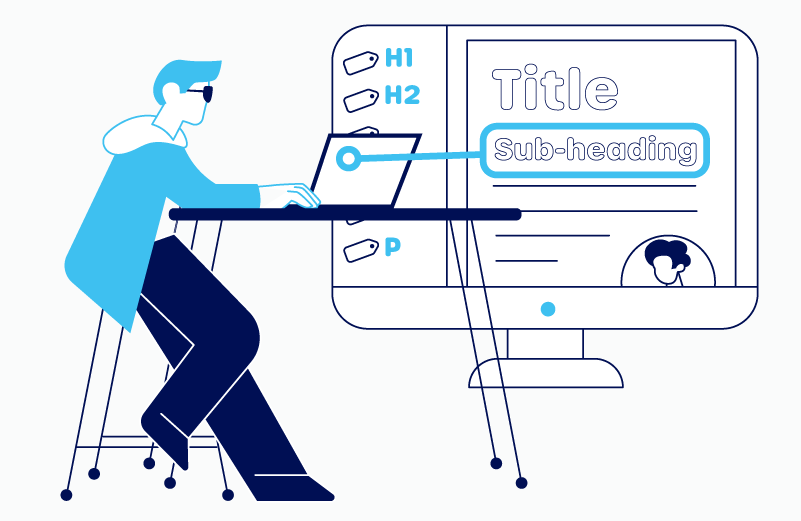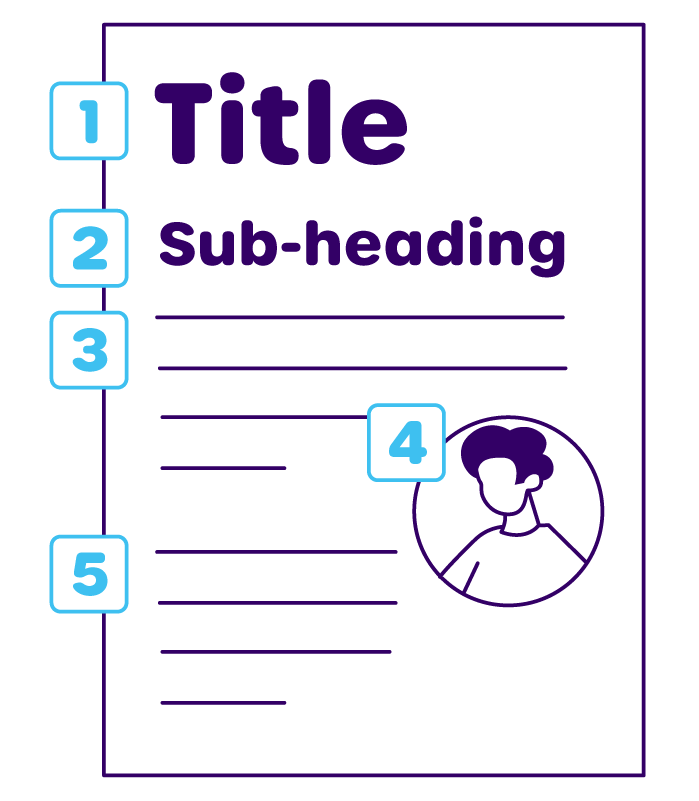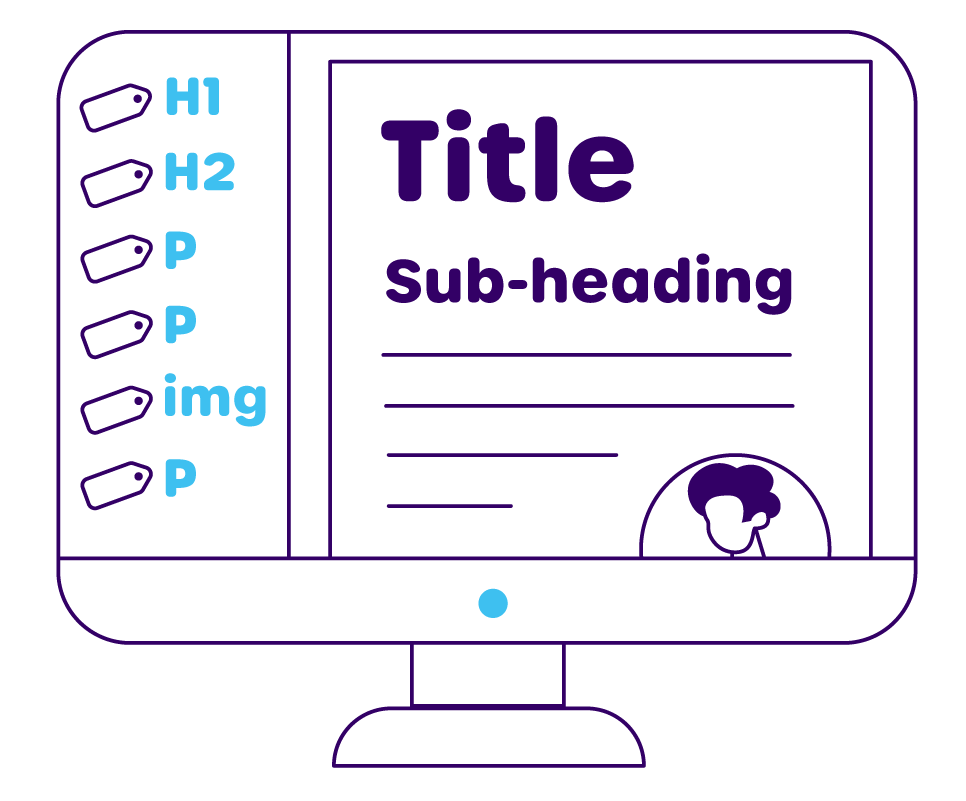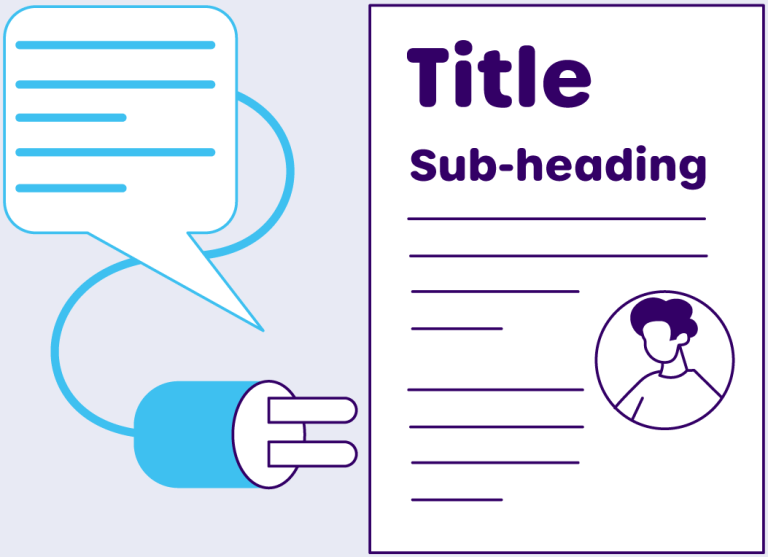PDF accessibility and WCAG standards
Find out how graphic design for PDF accessibility helps users access your content and what the WCAG standards mean for you.
We can think of PDF accessibility in two ways:

Visual content design
In the UK, there are around 6 million people with dyslexia, 3 million who are colour blind, and 2 million with some degree of sight loss. Ensuring visual clarity in the design of your documents is essential for these users and beneficial for everyone.
Consider these aspects in your projects:
- Fonts – chose a good, clear, sans-serif font for body text and avoid small point sizes. Don’t use text over hight contrast photos, low contrasting colours or patterned backgrounds.
- Colour choices – colour should not be used as the only means of conveying information, red/green, orange/blue can be particularly hard to distinguish if you are colour blind. There are good colour blindness simulators online and some Adobe software now has built-in options to test your work. Take particular care with charts and graphs. whocanuse.com is a useful site to test colour combinations for different visual impairments.
- Colour contrast – WCAG guidelines state minimum colour contrast ratio, of body text ≥ 4.5:1, title text ≥ 3:1. There are some great resources online to check this – the TPGI colour contrast analyser is free to download for PC or Mac.
- Structure – ensure your document uses clear headings, sub-headings, properly bulleted lists and visible hyperlinks. The hierarchy of information should be clear and easy to follow. Tables should have a simple structure and always use header rows. Longer documents must include navigable contents pages and bookmarks, with document page numbering aligning to PDF pages.
Although primarily aimed at web-designers, understandingaccessibility.com has some good resources on visual content accessibility.
Assistive technology
Assistive technology is not limited to screen-readers for impaired vision. Documents must work with all the following to meet the WCAG standards:
PDF accessibility in Adobe Acrobat
The most popular PDF reader, Adobe Acrobat has many accessibility features:
- Text reflow – The option to ‘reflow’ documents (Command+4 on a Mac, Ctrl+4 PC). This simplifies the structure of a PDF, converting text into a single column the width of the document window. There is no need to scroll left or right to read text, of particular benefit when using screen magnifiers such as Zoomtext or Supernova.
- Replace document colours – Changes the background and text colours to high contrast, usually green text on a black background. Flowing text over images or some coloured backgrounds can cause problems.
- Document tags – used by screen-readers to follow the structure, order and content of a document. These are not visible in the document window.
- Accessibility check – (Acrobat Pro) checks the accessibility of your document, however it’s only a partial guide and many aspects must be checked manually.
- Alt-text – hidden text assigned to images, used by screen-readers to describe visual content and meaning.
Text-to-speech readers
(literacy software)
Not to be confused with screen-readers, programs, such as Read and Write Gold provide visual and auditory feedback of text. Beneficial for users with dyslexia, learning difficulties, visual impairments and those learning English as a second language.
These programs need a correctly ordered document or website to follow. Known as the ‘reading order’, this is the same as you would expect to read the document visually. If the design has not been structured properly, the text-to-speech reader will not follow your intended order. The British Dyslexia Association is a good place to find out more.


Screen-readers
For use by those with impaired vision, programs such as NVDA, JAWS and VoiceOver are more sophisticated programmes than text-to-speech. They have the ability to navigate software without the use of a mouse (which relies on being able to see the cursor), using keyboard commands instead.
To work with screen-readers, documents must have all content ‘tagged’, differentiating headings, paragraphs, images, tables and graphics, and allowing navigation via bookmarks and text anchors. All non-decorative images containing information are provided ‘alt-text’ describing visual content and meaning.
Making PDF content ready for screen-readers is a complex process, but must be undertaken to meet WCAG standards.
Website overlays and PDF accessibility
Added to your website as a plug-in, they offer some form of text-to-speech functionality. Overlays still require properly structured documents and websites to follow, in the same way text-to-speech readers do.
Many users who require assistive technology, may not benefit from changing to software they are unfamiliar with. SCOPE have some excellent resources on overlays and why they may not be best route to an accessible website.


Alt-text
Alt-text is used by screen-readers to describe visual content, such as photos, charts and info-graphics. It must be carefully written to convey information, meaning and appearance, so a user with impaired vision will have the same understanding a fully sighted user would.
Images which do not convey additional information from the text, or are purely decorative do not require an alt-text description. There are many guides online to writing good alt-text and we can offer help if needed.
PDF Accessibility and WCAG – should we comply?
The Web Content Accessibility Guidelines (WCAG) are an internationally recognised set of recommendations to make websites accessible to users with a broad range of disabilities, including sensory, intellectual, learning and physical. They cover all content on your website, including any PDF or other format of document you upload to it.
Regardless of legal obligations, meeting the guidelines is a commitment to inclusivity, enabling everyone to access information, regardless of their physical or intellectual abilities.
In 2018, the Public Sector Bodies (Websites and Mobile Applications) Accessibility Regulations Act, became law, which applies the WCAG 2.1 AA standards to all websites operated or funded by government bodies.
The European Accessibility Act (EAA) will become legally applicable in the EU in 2025, and will require websites, apps, PDFs and others to conform to WCAG 2.1 AA criteria within the EU. It is not yet clear if the UK government will set similar standards, but companies in the UK will need to comply if they sell products or services in any EU member state.
Further reading
Find out more about PDF Accessibility and WCAG standards, and different levels of compliance:
- gov.uk – Understanding WCAG 2.2
- Wikipedia – Web Content Accessibility Guidelines
